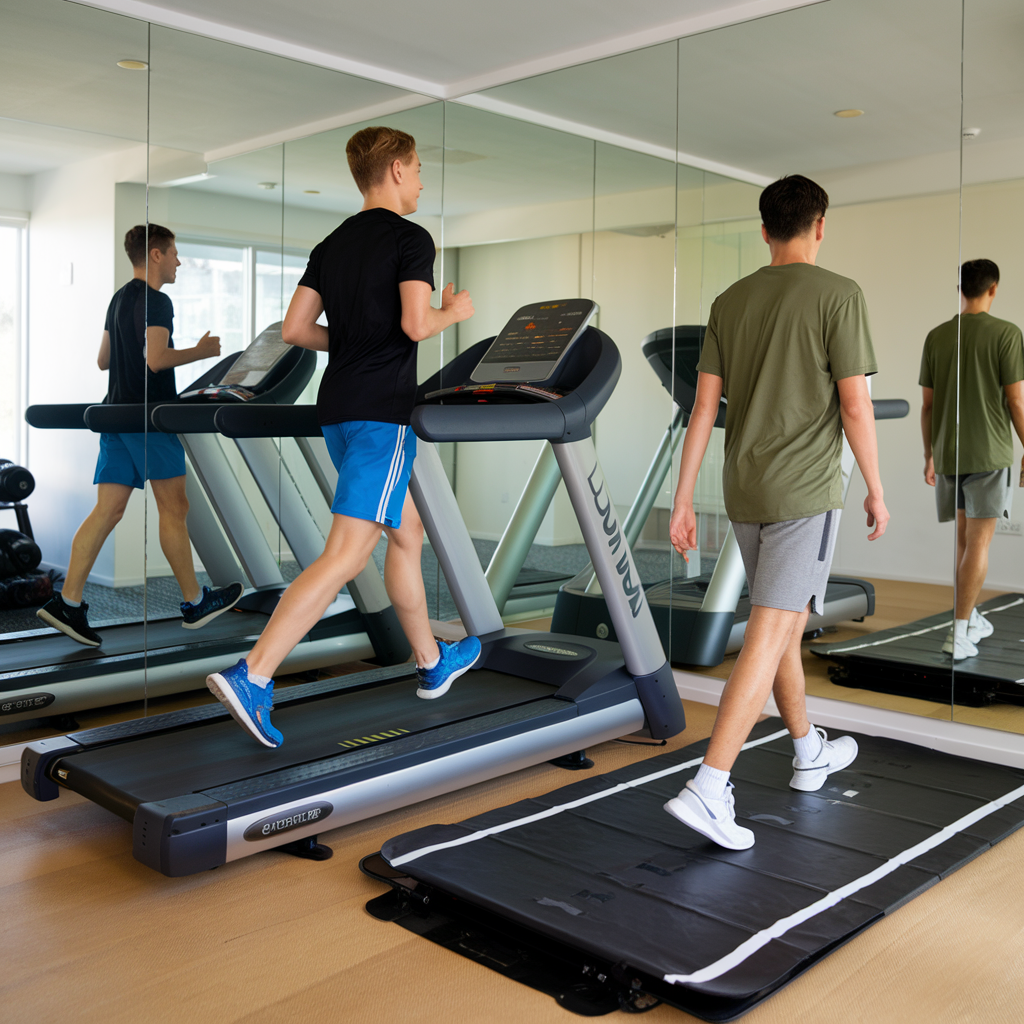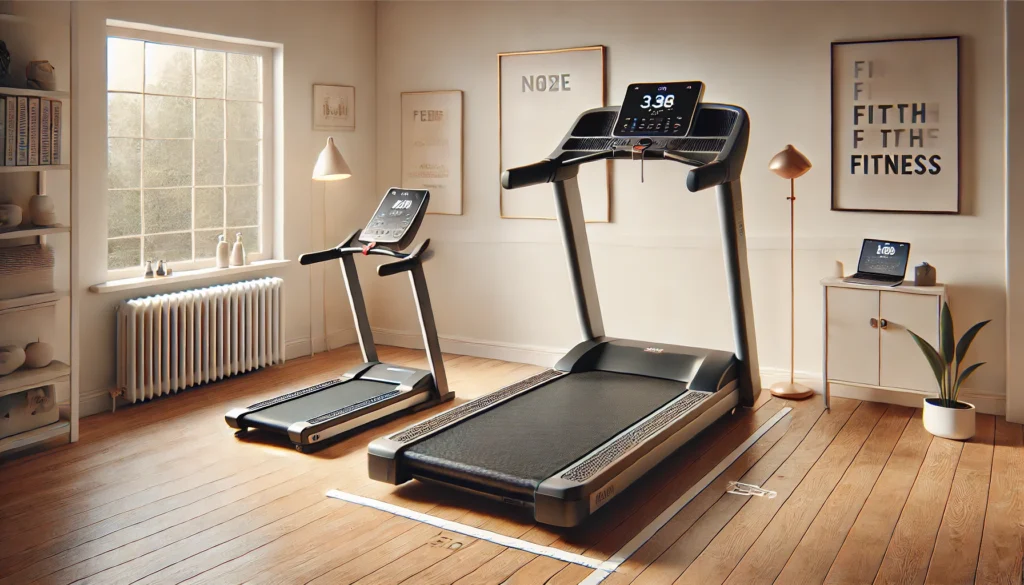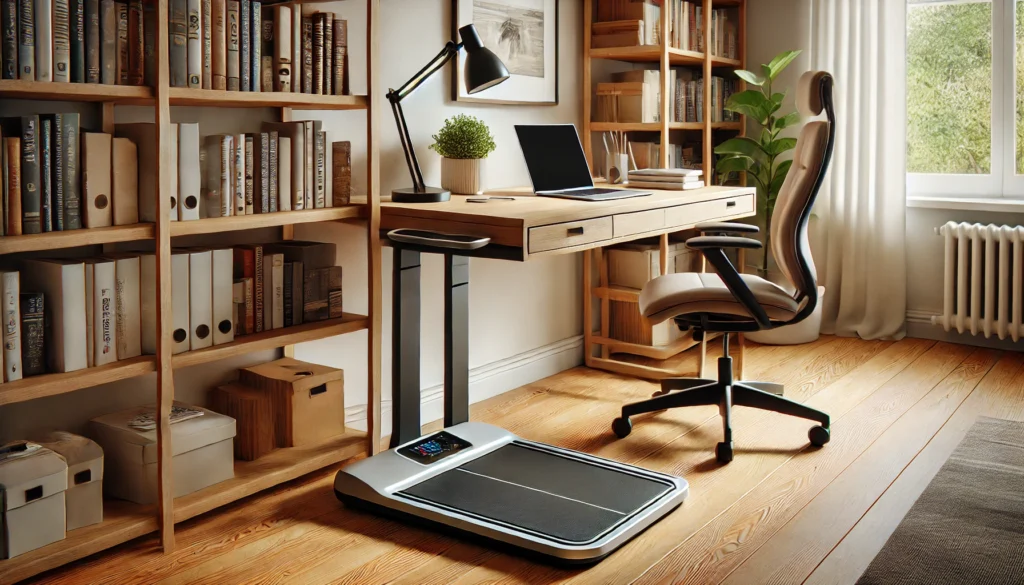Physical Address
304 North Cardinal St.
Dorchester Center, MA 02124
Physical Address
304 North Cardinal St.
Dorchester Center, MA 02124

If you're looking to stay active without sacrificing space or comfort, you might be wondering if a walking pad can replace a traditional treadmill. These compact devices have gained popularity for their convenience and versatility, making them an appealing option for busy lifestyles. But do they really stack up against the classic treadmill?
Walking pads offer a unique blend of portability and fun
If you’re looking to stay active without sacrificing space or comfort, you might be wondering if a walking pad can replace a traditional treadmill. These compact devices have gained popularity for their convenience and versatility, making them an appealing option for busy lifestyles. But do they really stack up against the classic treadmill?
Walking pads offer a unique blend of portability and functionality, perfect for those who want to incorporate movement into their daily routine. Whether you’re working from home or catching up on your favorite show, a walking pad allows you to stay active without the bulk of a treadmill. In this article, we’ll explore the key differences and benefits, helping you decide if a walking pad is the right fit for your fitness goals.

When considering a walking pad as a replacement for a treadmill, it’s essential to evaluate your fitness needs and preferences. Both offer unique advantages that cater to different lifestyles.
Walking pads are designed to be compact and lightweight. This feature makes them an excellent choice for those with limited space. You can easily store them under a desk or in a closet when not in use. In contrast, treadmills generally require more space and are not as easily moved. If you live in a small apartment or work from home and have space constraints, a walking pad is ideal.
While walking pads primarily focus on walking and light jogging, treadmills offer a broader range of functionality, including incline settings and various workout programs. If you are seeking high-intensity training, a treadmill is the better option. However, if your goal is to maintain a moderate activity level while multitasking, such as working or watching TV, a walking pad may perfectly suit your needs.
Walking pads typically feature a lower max speed compared to treadmills. They provide a more relaxed experience, focusing on walking rather than running. If you are new to exercising or have specific health concerns, a walking pad can be less intimidating and more accessible. On the other hand, treadmills can accommodate a more intense workout for seasoned fitness enthusiasts.
Both machines can produce noise, but walking pads are often quieter. This makes them suitable for shared living situations where you do not want to disturb others. If noise is a concern for you, a walking pad might be the preferable choice.
Walking pads tend to be more budget-friendly than treadmills. If you are starting your fitness journey or want to incorporate more activity into your day without a significant financial commitment, a walking pad is an economical solution. In contrast, a good-quality treadmill generally comes with a higher price tag, reflecting its advanced features.
Ultimately, whether a walking pad can replace a treadmill depends on your fitness goals and lifestyle preferences. If you aim for convenience, space-saving design, and moderate physical activity, a walking pad may be the better option. However, if you seek versatility and a more intense workout, a treadmill is worth considering.
Walking pads offer numerous advantages that make them an appealing alternative to traditional treadmills. Their design emphasizes convenience and functionality, aligning well with modern lifestyles.
Walking pads take up significantly less space compared to conventional treadmills. With their slim profile you can easily tuck them under a desk or store them in a closet when not in use. This compact size allows you to keep your living or working area organized and clutter-free while still maintaining access to a walking solution. Ideal for apartments or small homes walking pads fit seamlessly into tight spaces.
One of the standout features of walking pads is their portability. Lightweight and often equipped with wheels you can effortlessly move them from one room to another. This means you can easily transition from a workout in your living room to a session in your home office. Whether you want to walk while watching television or working you can take advantage of your walking pad’s flexibility to maintain an active lifestyle anytime.
Walking pads operate quietly compared to traditional treadmills. Their design minimizes motor noise which means you can walk without disturbing others in your home. This is particularly beneficial for those who work from home or live in shared spaces where noise control is important. The quiet operation allows you to engage in activities like listening to music or participating in calls while walking without distraction.
When evaluating walking pads against treadmills, several factors come into play including price range, features and functions, and workout intensity. Understanding these elements will help you determine which option aligns best with your fitness needs and lifestyle.
| Equipment Type | Average Price Range |
|---|---|
| Walking Pads | $100 – $500 |
| Treadmills | $300 – $3,000 |
Walking pads generally fall into a lower price range compared to treadmills. You can find quality walking pads starting around $100, while treadmills often begin at $300 and can escalate into thousands of dollars for advanced models. This affordability makes walking pads an attractive entry point for those starting their fitness journey or working with a limited budget.
| Feature | Walking Pads | Treadmills |
|---|---|---|
| Incline Settings | No | Yes |
| Built-in Workouts | Limited | Extensive |
| Display Console | Basic | Advanced |
| Size and Portability | Compact and lightweight | Bulky and heavy |
Walking pads are designed for simplicity and portability, offering minimal features. They typically lack incline settings and advanced workout programs, making them straightforward for walking. In contrast, treadmills provide a range of functions, including adjustable inclines, extensive workout programs, and advanced display consoles that track various metrics. If you prefer varied workouts or need to simulate different terrains, a treadmill may better suit your needs.
| Equipment Type | Typical Intensity Level |
|---|---|
| Walking Pads | Low |
| Treadmills | Low to High |
Walking pads are primarily designed for low-intensity workouts, making them excellent for casual exercise or light rehabilitation. They provide a relaxed environment for maintaining activity while completing other tasks. Treadmills, however, cater to a broader intensity spectrum. You can engage in everything from walking to running with adjustable speeds and inclines, making them suitable for more rigorous fitness regimens. If your goal is to incorporate higher intensity workouts, a treadmill would be the preferable choice.

Walking pads serve multiple purposes that cater to a variety of lifestyles, making them an excellent option for many individuals. Their compact design and functionality make them particularly suitable for specific needs.
Incorporating a walking pad into your home office can significantly enhance your work routine. You can maintain an active lifestyle while sitting at your desk for extended periods. Walking pads allow you to walk at a gentle pace while taking calls, participating in virtual meetings, or reading emails. This not only keeps you physically active but also can boost productivity and focus, creating a more energizing work environment.
If you live in an apartment or a small home, a walking pad is an ideal fitness solution. They require minimal floor space and can be easily stored away when not in use. You can set it up in your living room, bedroom, or even a corner of your office, enabling you to exercise without sacrificing valuable space. The portability of walking pads allows you to move them effortlessly, providing flexibility in your workout location.
Walking pads can play a crucial role in rehabilitation for individuals recovering from injuries or surgeries. They provide a low-impact way to engage in physical activity without placing excessive strain on your body. You can start by walking at a comfortable pace and gradually increase your duration and intensity as you regain strength. The simple controls and stable design of walking pads make them user-friendly for those in rehab, promoting safe and effective recovery.
When selecting a walking pad, it is essential to consider specific features that align with your fitness goals and lifestyle. This ensures you invest in a walking pad that meets your needs effectively.
| Model Name | Speed Range | Weight Capacity | Price Range | Key Features |
|---|---|---|---|---|
| WalkingPad A1 | 0.5 to 6 mph | 220 pounds | $299 | Foldable design, lightweight |
| GoPlus 2 in 1 | 0.5 to 7.5 mph | 265 pounds | $379 | Incline adjustability, remote control |
| Horizon T101 | 0 to 10 mph | 300 pounds | $599 | Wide running surface, Bluetooth speakers |
| Splendor Fitness | 0.5 to 4 mph | 250 pounds | $199 | Budget-friendly, floor protector |
| Lifespan TR1200-DT3 | 0.4 to 4 mph | 350 pounds | $1,499 | Heavy-duty build, desk treadmill |
Choosing the right walking pad will enhance your fitness experience and seamlessly fit into your daily routine.
Choosing between a walking pad and a treadmill ultimately hinges on your personal fitness goals and lifestyle. If you value portability and compactness a walking pad might be your best bet. It’s perfect for those with limited space or who want to incorporate movement into their daily routines without the bulk of a treadmill.
However if you seek more advanced features and higher intensity workouts a treadmill could be the better option. Both have unique advantages so consider what aligns best with your needs. Whichever you choose staying active is what truly matters.